Mopane Tree
- November 14, 2024
- 0 comment
The Mopane tree (Colophospermum mopane) is an iconic and ecologically significant tree found throughout southern Africa. Known for its distinctive butterfly-shaped leaves, the Mopane tree plays an important role in sustaining both the natural environment and local wildlife.
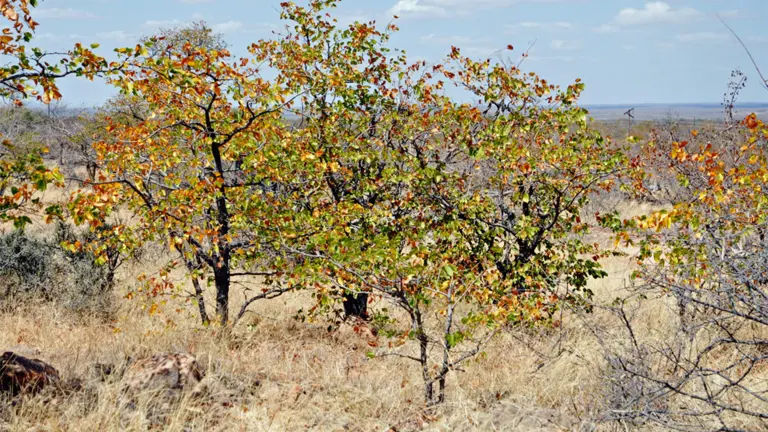
Its robust structure and adaptability to arid conditions make it invaluable for soil stabilization and as a food source. This article explores the Mopane tree’s unique characteristics, its place within African ecosystems, and its resilience in harsh climates.
What Is a Mopane Tree?
The Mopane tree, scientifically known as Colophospermum mopane, belongs to the legume family, Fabaceae. It’s a resilient, slow-growing tree that can reach up to 18 meters in height, with a lifespan often exceeding 100 years. The Mopane’s leaves are easily recognizable; shaped like butterfly wings, they are a striking feature that helps the tree retain moisture. The bark is gray-brown, thick, and fissured, which aids in reducing water loss.
| Characteristic | Description |
|---|---|
| Scientific Name | Colophospermum mopane |
| Common Names | Mopane, Butterfly Tree |
| Location | Native to southern Africa (Botswana, Namibia, Zimbabwe, South Africa) |
| Size | Typically grows 4-18 meters, depending on water availability |
| Growth Pattern | Slow-growing with deep roots; can be single-stemmed or multi-stemmed |
| Lifespan | Often exceeds 100 years |
| Ecological Role | Stabilizes soil, supports diverse wildlife, improves soil nitrogen |
| Drought Tolerance | Extremely drought-tolerant, well-adapted to arid environments |
| Notable Feature | Butterfly-shaped leaves; critical food source for Mopane worms |
| Conservation Status | Stable but increasingly impacted by habitat loss and climate change |
Mopane trees also contribute significantly to soil health, enriching it with nitrogen through their association with nitrogen-fixing bacteria in the roots. An interesting fact about the Mopane tree is its resilience to drought conditions, allowing it to flourish even in challenging climates.
Mopane Tree Species
Although Colophospermum Mopane is generally regarded as a single species, it has various growth forms influenced by the environment. Mopane trees adapt to conditions, growing as large trees where water is available and as small shrubs in drier regions.
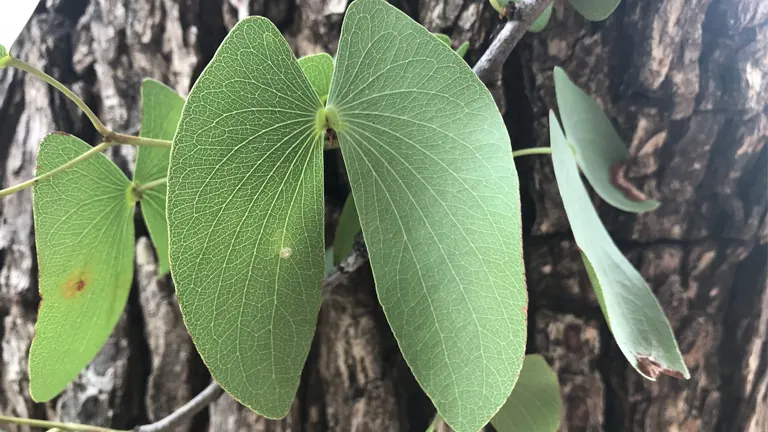
This versatility is not only an adaptation mechanism but also an ecological advantage, as it provides a consistent habitat and food source for wildlife across different ecosystems. In northern and eastern regions of its distribution, Mopane tends to grow taller, while in drier western areas, it often takes on a shorter, shrub-like form.
Where Do Mopane Trees Grow?
Mopane trees are native to the savannas of southern Africa, predominantly in Botswana, Namibia, Mozambique, Zimbabwe, and South Africa. They are often found in hot, arid, and subtropical climates, thriving in low-nutrient soils that many other plants struggle to survive in.
Mopane woodlands are crucial in these regions, stabilizing the soil and preventing erosion in areas prone to seasonal flooding and dry spells. Additionally, Mopane trees provide food and shelter for diverse animals, such as elephants and the Mopane worm, which is a significant source of protein for local communities.
How to Grow and Care for Mopane Trees
Growing a Mopane tree outside of its native habitat requires careful attention to its needs:
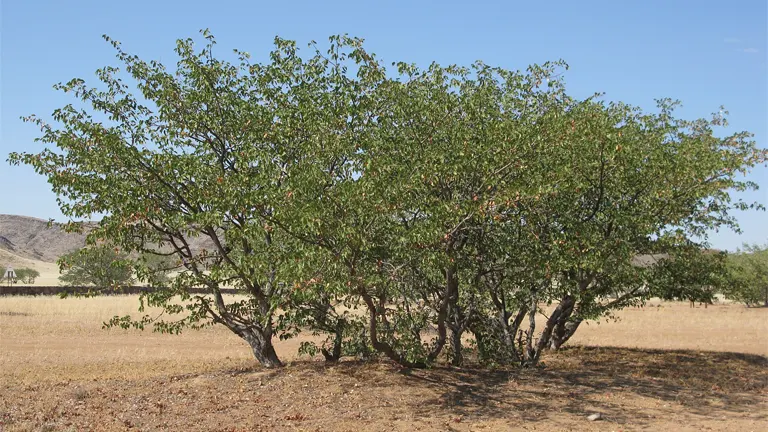
- Soil: Mopane trees prefer well-draining, sandy soil with low fertility.
- Sunlight: Full sun is necessary for optimal growth.
- Watering: Although drought-resistant, Mopane saplings need consistent watering until established. Mature trees require minimal watering, particularly in arid climates.
- Propagation: Mopane trees are best propagated from seeds. Scarifying the seed coat can improve germination rates. Plant seeds in well-drained soil and ensure ample sunlight.
To maintain healthy growth, Mopane trees should be pruned to remove any damaged branches and to control size if needed.
Ecological Benefits of Mopane Tree
The Mopane tree provides numerous ecological benefits:
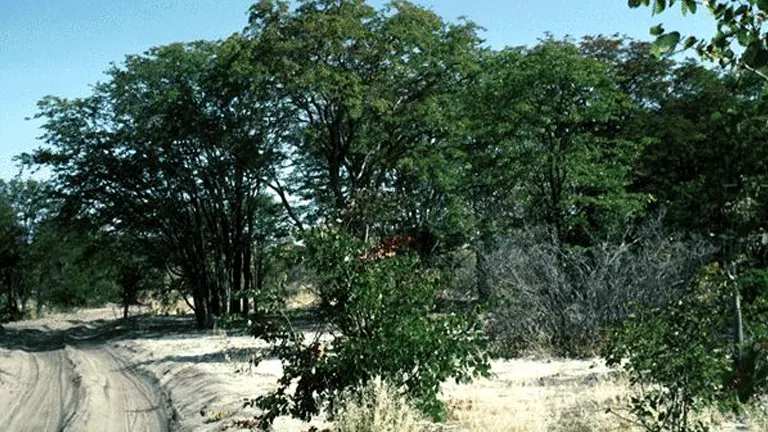
- Soil Health Improvement: As a leguminous plant, Mopane enriches soil nitrogen, benefiting surrounding vegetation.
- Erosion Prevention: Its extensive root system helps stabilize the soil, reducing erosion.
- Supporting Biodiversity: Mopane trees offer habitat and food sources for insects, birds, and mammals. The Mopane worm, a caterpillar widely consumed in Africa, relies on this tree as its primary food source.
These qualities make the Mopane tree essential for maintaining the delicate balance of arid and semi-arid ecosystems in southern Africa.
Mopane Tree Flowering and Pollination
The Mopane tree typically flowers in the late summer to early autumn, with small, inconspicuous yellow-green flowers that emit a faint scent. While the flowers may not be visually striking, they play an essential role in the ecosystem by providing nectar and pollen to insects, particularly bees. Pollination is vital for the tree’s reproduction and the production of seeds that support local wildlife and ecosystem renewal.
Is Mopane Tree Drought-Tolerant?
The Mopane tree’s ability to endure extreme drought conditions is one of its most remarkable features. It has developed deep root systems that allow it to access water stored far below the surface. Additionally, its leaves are coated in a waxy layer, reducing water loss during dry periods. This characteristic makes the Mopane tree suitable for regions with limited rainfall and harsh, arid climates.
Mopane Tree and Wildlife Interactions
The Mopane tree has a profound relationship with local wildlife:
- Food Source for Animals: Elephants are known to feed on the leaves, bark, and branches of the Mopane tree, particularly in dry seasons when food is scarce.
- Habitat for Insects and Birds: The Mopane tree provides habitat for a variety of bird species and insects, contributing to local biodiversity.
- Mopane Worm: The larva of the emperor moth, known as the Mopane worm, is a staple food in many African diets. It depends exclusively on Mopane leaves, highlighting the tree’s role in the food web.
Final Conclusion
The Mopane tree, with its remarkable adaptability and ecological contributions, is a keystone species in southern Africa. From providing food for local wildlife to stabilizing soil and aiding in nitrogen fixation, it serves as a foundation for biodiversity and environmental health. As climate change and deforestation impact ecosystems, preserving Mopane woodlands becomes increasingly important for sustaining the wildlife and communities that rely on this resilient tree.
Frequently Asked Questions (FAQs)
- What is the scientific name of the Mopane Tree?
The scientific name is Colophospermum mopane. - Where is the Mopane Tree commonly found?
It’s native to southern Africa, including Botswana, Namibia, Zimbabwe, and South Africa. - How tall can a Mopane Tree grow?
It can grow between 4 to 18 meters, depending on water availability. - What are the main features of Mopane leaves?
Mopane leaves are butterfly-shaped and waxy, helping the tree conserve water. - Why is the Mopane Tree important to wildlife?
It provides food and habitat for animals, especially elephants and the Mopane worm. - Is the Mopane Tree drought-tolerant?
Yes, it’s highly drought-tolerant and adapted to arid climates. - What ecological benefits does the Mopane Tree offer?
It helps prevent soil erosion, enriches soil nitrogen, and supports biodiversity. - What is the conservation status of the Mopane Tree?
The tree is generally stable but affected by habitat loss and climate change.
We hope this guide has highlighted the importance of the Mopane Tree in supporting wildlife and local communities. Have experiences or thoughts on its role in nature? Share below to help others appreciate this resilient tree, and share this guide with those interested in conservation and sustainability!




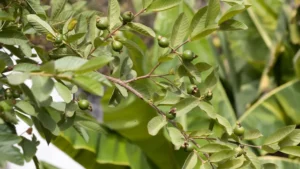
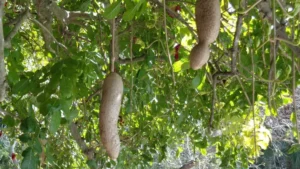





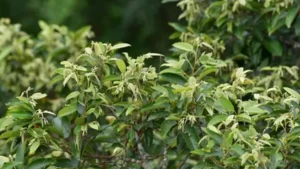
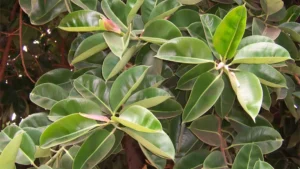

Leave your comment